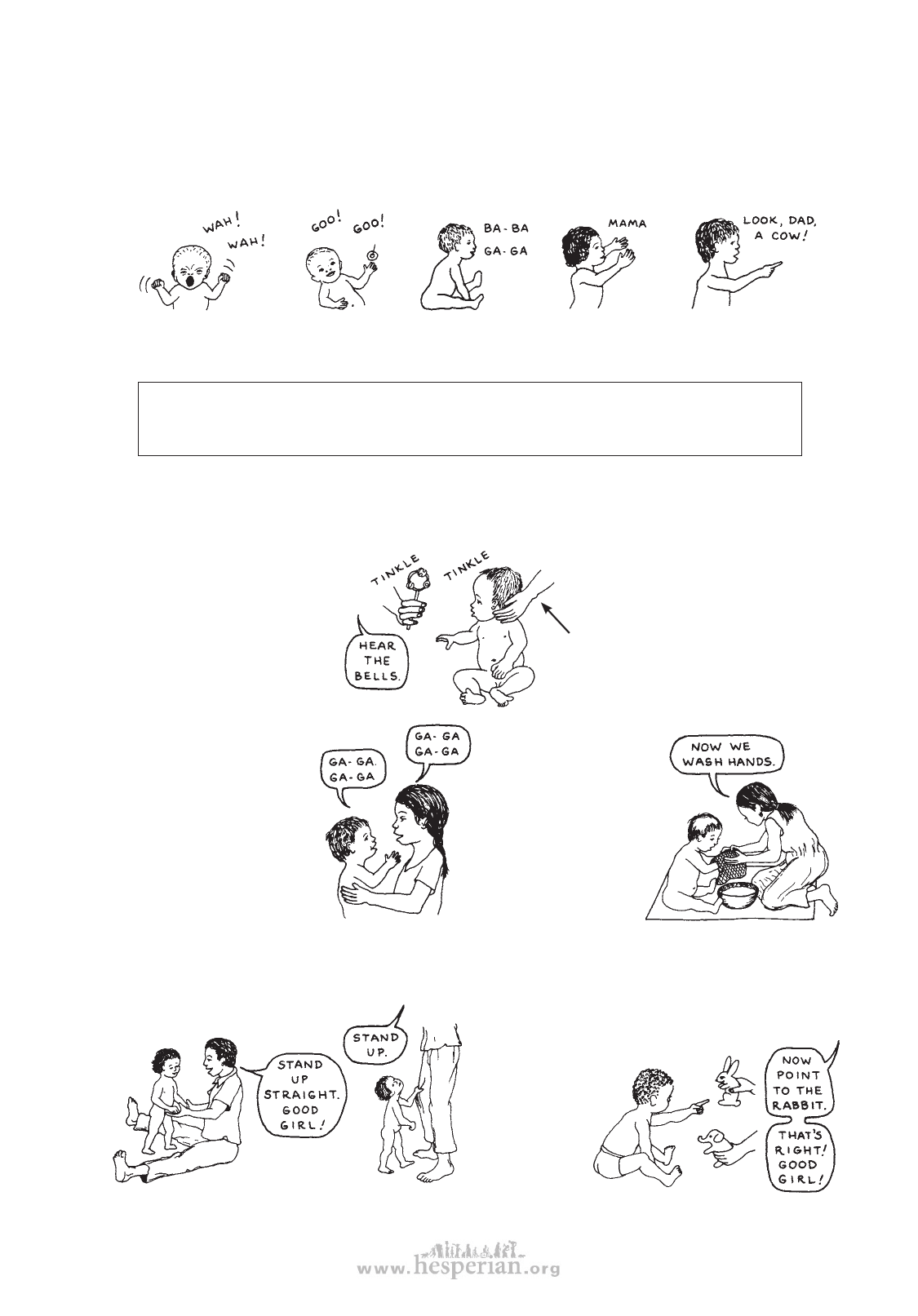
DEVELOPMENT ACTIVITIES
7. Activities for communication and speech:
A normal child’s ability to communicate develops through these stages:
expresses needs through
body movements, looks
on the face, and crying
makes ‘happy
sounds’—coos
and gurgles
babbles—listens
to sounds and
tries to imitate
says a
few words
begins to put
words (and
ideas) together
313
0-1 month
1-2 months
4-8 months
8-12 months
12 months-3 years
Learning that prepares a baby for speech begins early, long before she says her
first word. Speech develops out of body movement, use of the mouth and tongue
in eating, and use of the senses—through interaction with people and things.
One of the early stages in a baby’s development of speech is noticing and responding
to different sounds. A delayed child may need extra help and stimulation:
Make noises with bells, rattles,
clickers, and drums, first
directly in front of the baby,
then to one side, so that she
turns her head.
If she does not turn her head, bring
the toy back so she can see it, and
move it away again.
Or, gently turn her head so that she
sees what makes the sound. Help
her less and less—until she turns her
head alone.
Repeat the babble of the
child: have conversations
with him in his language. But
when he begins to say words,
repeat and pronounce them
clearly and correctly—do not
use ‘baby talk’.
Understanding language depends not only on
hearing, but also on watching lips and looks.
So speak to the child on her level.
To get the child used
to language, explain
everything you do
with him. Use clear,
simple words—the
same ones each time.
Name toys, objects,
body parts. Repeat
often.
A child understands words before he can speak
them. Play question games to help him listen
and learn; he can answer your questions by
pointing, nodding, or shaking his head.
LIKE THIS
NOT LIKE THIS
Repeat words.
Make small
requests.
Reward
successes.
disabled village children